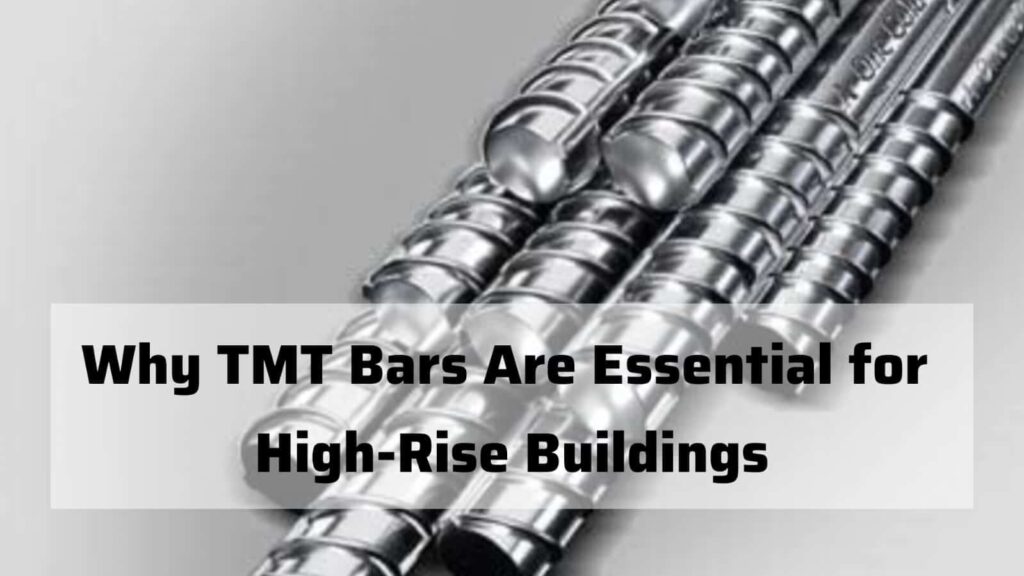When constructing tall structures, the type of reinforcement material to be used is very important. This is important for guaranteeing the structural stability of the structures involved in a project. Today, thermomechanically treated (TMT) bars have gained much popularity when it comes to the reinforcement of high-rise structures.

They provide special characteristics that respond to the problems that relate to high-rise structures. Here’s why TMT bars are essential for high-rise construction:
1. Superior Strength and Load-Bearing Capacity:
The loads of structures, particularly high-rise structures, have to be supported in some way. These loads include the weight of the building and other loads that may be exerted on the building, such as wind and earthquake loads. TMT bars have high strength because of the thermo-mechanical treatment process. This treatment entails hard skin on the exterior while having a soft interior. It also means that TMT bars can be used to support heavy loads due to this structure. It also assists them in not yielding to deformation. This provides the necessary reinforcement for the load-bearing complexities of high rises that are inherent in today’s buildings.
2. Enhanced Flexibility and Ductility:
Both flexibility and ductility are the essential characteristics of high-rise buildings. This is even more the case in seismic regions. TMT bars do not lose their capacity to bend at the required angle when subjected to pressure. This is important for responding to the energy of an earthquake and releasing it. They make it difficult for structures to fail easily because of their flexibility. This also increases the structure’s capacity to handle dynamic loads. This makes TMT bars perfect for areas that are prone to earthquakes to ensure structures can withstand the shocks.
3. Improved Corrosion Resistance:
Tall structures are exposed to many unfavorable environmental conditions. Such conditions include high humidity, polluted areas, and, in the case of coastal regions, areas with high salinity. TMT bars are very resistant to corrosion because of the TMT process. It also helps to improve their endurance in such conditions, as noted above. This reduces the chances of the reinforcement corroding and thus losing its effectiveness throughout the service life of the building. It also effectively manages or minimizes the need for maintenance and, at the same time, increases the durability of the high-rise structures.
4. Cost-Effectiveness:
As compared to conventional steel reinforcement for the construction of high-rise buildings, TMT bars, though they may initially cost relatively more, are cheaper in the long run. Due to the enhanced strength of TMT bars, structural designs can be done in a much better way. This optimization can lead to a decrease in the amount of steel used and an overall material cost reduction. Also, they do not wear out easily and are not easily attacked by rust, reducing maintenance and repair costs over time. This helps in a great reduction of costs in the long run.
5. Regulatory Compliance and Safety:
Safety and building codes are always very strict for high-rise buildings. These codes were created to protect the stability of the stability of the framework. TMT bars produced meet international and national standards. This makes them the best option for satisfying these regulations’ needs since they have been proven to meet the requirements. These aspects affect their performance characteristics and, by extension, the safety of the building. This also gives a lot of consolation and assurance to both the builders and users of the structures.
Therefore, it is clear that TMT bars are crucial in construction, especially in high-rise buildings. The others include strength, flexibility, and corrosion; cost; and safety measures that are hard to match with other materials. Their advanced properties help to solve the specific problems arising from construction at great heights. This makes certain that these large buildings are sound, long-lasting, and can perform different functions as well as resist different environmental and structural loads.


